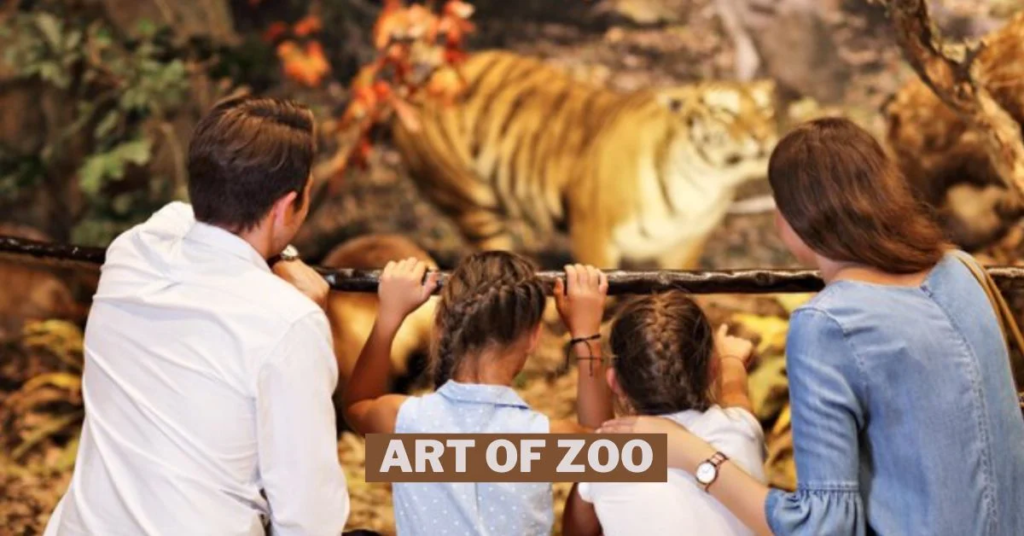The concept of the “Art of Zoo” might sound intriguing or mysterious at first glance. However, this phrase encompasses the creative expression inspired by the natural world and the myriad of creatures within it. In this context, the “Art of Zoo” explores how artists, photographers, and writers draw inspiration from zoo environments to create compelling works that highlight the beauty, diversity, and importance of wildlife. Through this lens, we can appreciate how zoos not only function as places of conservation but also as spaces that inspire art and culture.

- Understanding the Intersection of Art and Nature
Throughout history, nature has been an enduring source of inspiration for artists across all mediums. The structured yet chaotic beauty of wildlife and the natural world has fueled countless creative endeavours. The term “Art of Zoo” encapsulates this very intersection of nature and creativity, where zoos become muses for artists and provide the perfect blend of controlled observation and wild spontaneity.
Zoos house a diverse range of species, allowing artists to observe animals’ behaviours, physical characteristics, and interactions up close. These interactions offer a window into the natural world that would otherwise be difficult to access, especially for artists living in urban environments. This unique setting provides endless opportunities to study the movement, form, and essence of various animal species. The “Art of Zoo” is therefore more than just a literal interpretation; it’s an artistic philosophy that melds human creativity with the wonders of the animal kingdom.
- The Role of Zoos in Artistic Inspiration
2.1. A Place of Observation and Learning
For artists, zoos serve as both studios and classrooms. Watching a lion’s powerful gait or observing the delicate flutter of a butterfly’s wings can inspire paintings, sculptures, or even digital art. Zoos provide a rare opportunity to observe exotic animals that might be difficult to see in the wild. This access helps artists create more accurate and detailed representations of animals in their art.
Photographers, in particular, benefit greatly from zoos. Capturing a tiger mid-stride or a monkey’s playful antics can lead to breathtaking photography that speaks to the vitality and spirit of the animal world. These images, in turn, can inspire other forms of art, such as painting or digital illustration, creating a ripple effect in the artistic community.
2.2. Artistic Workshops and Exhibitions
Many modern zoos have recognized the role they play in the arts and have begun to host workshops, drawing classes, and exhibitions focused on wildlife art. These initiatives not only promote conservation efforts but also encourage a greater connection between people and animals through creative expression. For instance, a workshop might involve live sketching sessions where artists of all skill levels can draw animals as they move, providing valuable practice in capturing motion and anatomy.
Art exhibitions in zoos are another way in which the “Art of Zoo” comes to life. Art pieces inspired by the residents of the zoo can be showcased, turning the zoo itself into an open-air gallery. These exhibitions serve the dual purpose of celebrating creativity while promoting awareness about the conservation of the featured animals.
- How Artists Utilize Zoos for Creative Projects
3.1. Sketching and Painting
For painters and sketch artists, zoos offer a dynamic and ever-changing subject. Unlike studio models or inanimate objects, animals are unpredictable. Capturing an animal in motion or expressing its personality on canvas can be a challenging yet rewarding experience. For many artists, the zoo is a place to practice life drawing and hone their ability to capture complex forms and textures, such as feathers, fur, and scales.
3.2. Photography and Videography
Wildlife photography in natural habitats can be costly and requires extensive travel, equipment, and sometimes even special permissions. Zoos offer an alternative that allows photographers to experiment with angles, lighting, and composition without the limitations of being in the wild. High-resolution photographs and video footage can later be used as references for other art projects or shared as standalone works that emphasize the beauty and grace of wildlife.
3.3. Mixed Media and Digital Art
Artists who work with digital tools or mixed media find inspiration in the diverse scenes offered by zoos. The juxtaposition of natural elements within man-made enclosures can evoke unique artistic ideas. An artist might use photographs of animals, combine them with digital illustrations, and overlay abstract patterns to create art that questions the boundary between nature and human intervention.
- The Message Behind the Art
While the “Art of Zoo” can be appreciated for its aesthetic value, it often carries deeper messages. Conservation-themed art is particularly powerful, as it serves as a visual reminder of the importance of protecting wildlife and preserving ecosystems. Art inspired by zoos often showcases not just the beauty of animals but also their vulnerability. The juxtaposition of a caged animal with a wild one, for example, can evoke emotions that push viewers to consider the ethics and importance of conservation.
Organizations and artists frequently collaborate on projects that use the “Art of Zoo” to raise awareness and funds for conservation efforts. Murals, public sculptures, and exhibitions often come with educational messages or campaigns that inform the public about endangered species and habitat destruction.
- Challenges and Ethical Considerations
5.1. The Balance Between Art and Animal Welfare
Creating art inspired by zoos does come with its set of challenges and ethical questions. Critics argue that while zoos provide opportunities for artistic observation, they can sometimes prioritize entertainment over the well-being of animals. Therefore, artists who choose to create “Art of Zoo” pieces must be conscious of the message their art sends and ensure it aligns with humane treatment and ethical standards.
5.2. The Role of Responsible Art
Artists have a responsibility to ensure that their work promotes respect for wildlife. Art can either perpetuate harmful stereotypes or inspire meaningful conversations. The best examples of “Art of Zoo” do not glorify captivity but rather encourage viewers to appreciate and protect animals, whether in the wild or carefully managed conservation spaces.
Conclusion: A Celebration of Creativity and Conservation
The “Art of Zoo” serves as a fascinating intersection between human creativity and the natural world. Zoos offer a unique environment that provides endless inspiration, allowing artists to capture the beauty, strength, and vulnerability of wildlife. Whether through sketching, photography, or mixed media, the artistic creations that emerge from these spaces can captivate audiences and inspire a deeper appreciation for the natural world.
Ultimately, the “Art of Zoo” is more than just a genre; it’s a movement that fosters an emotional connection between humans and animals. Through art, we are reminded of the intricate beauty of the animal kingdom and the importance of preserving it for generations to come.
You may also read
female anime characters
bg3 change race mod



